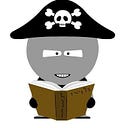Tim Burton’s “Alice in Wonderland”
Fantasy sequel imagined by the genius of the Quirky Gothic
Tim Burton’s Alice in Wonderland was a promising movie from the very start. The new cinematic technologies of 3D and CGI (computer-generated imagery) almost seemed to have been invented for this famously hallucinatory story. And the offbeat sensibilities of Tim Burton and Johnny Depp seemed a perfect match to those of the story’s author, Lewis Carroll.
In films like Edward Scissorhands and The Nightmare Before Christmas, Burton has shown himself to be a master of the Quirky Gothic. Burton is the descendant of dark humorists like Edward Gorey and Roald Dahl, but he is also the godfather to contemporary practitioners of such creepiness (Neil Gaiman and Lemony Snicket, for example). Moreover, in many of his films, Burton has employed his friend Johnny Depp–a gifted actor who gave his own odd twist to his roles as Captain Jack Sparrow (in Pirates of the Caribbean) and Willy Wonka (Charlie and the Chocolate Factory) and now the orange-haired Mad Hatter in this new film version of Alice.
If Burton’s film was promising right out of the gate, my hope was that he would make Carroll’s books more understandable. Growing up, I couldn’t figure them out. While I knew classmates — often intelligent loners keen on math and riddles — who loved Alice in Wonderland and Through the Looking Glass, my own feelings about the books resembled those of fantasy writer Terry Pratchett:
“I didn’t like the Alice books because I found them creepy and horribly unfunny in a nasty, plonking, Victorian way. Oh, here’s Mr. Christmas Pudding On Legs, hohohoho, here’s a Caterpillar Smoking a Pipe, hohohoho. When I was a kid the books created in me about the same revulsion as you get when, aged seven, you’re invited to kiss your great-grandmother.”
Mostly what I knew about Alice in Wonderland came from the 1951 animated Disney film: the White Rabbit, the Cheshire Cat, the hookah-smoking Caterpillar, Tweedle Dee and Tweedle Dum, the Mad Hatter, the Mad Tea Party, the playing-card Queen of Hearts (who shouted “Off with their heads!” and played croquet with upside-down flamingos), etc. A lot of etcetera. As a youngster, I sensed the undercurrent of cruelty and superciliousness, but I really didn’t get it.
In his film, Burton does little, it turns out, to clear up confusion about the Alice stories. Instead, to give himself some room for his own storytelling, he has imagined his film as a sequel: Burton’s Alice takes place when the girl is nineteen or some ten years after she first went down the rabbit hole. When she descends to Wonderland this time, Alice (played by Mia Wasikowska) meets once again the Mad Hatter (Johnny Depp) and must aid the White Queen (Anne Hathaway) in her battle against the Red Queen (Helena Bonham Carter) by slaying a monster known as the Jabberwocky.
This story, however, is only half the story. The other half is the computer-generated imagery, some of which is extraordinary. Still, those who have spent any amount of time in movie theaters in the last two years are likely to come away from Burton’s Alice with a ho-hum feeling that this is a catalog of all the stock-in-trade moments of computer-generated imagery from Lord of the Rings to The Chronicles of Narnia: the row upon row of automaton soldiers, the gargantuan and horrific monster lumbering over the landscape, the long-haired hero brandishing his sword above us, the dark castle seeming to hang in the air, the epic struggle between the forces of darkness and light, the occasional moments of comic cuteness. Alice now bring these clichés to 3D.
Another by-the-numbers feature of Burton’s film is the conceptualization of Alice as “empowered.” It is significant that Linda Woolverton was the screenwriter because Woolverton did something groundbreaking in 1991 in Beauty and the Beast when — in answer to feminist critics who complained about the messages that Disney films were sending to girls — she imagined Belle as feisty and self-determined. That was terrific. Some two decades later, Woolverton does predictably the same with Alice. No surprise here.
In Burton’s Alice, then, what we encounter is the generic — rather than the genius which we have become accustomed to in other Burton films. This new offering is showy in a high tech way but absentminded when it comes to story. Is that because Burton is doing a treatment of another’s work rather than fashioning a tale entirely his own? Or is that — as his films Beetlejuice and Edward Scissorhands prove — his imagination works best when half-tethered to the real world rather than set loose in the wholesale giddiness of fantasyland itself?
Burton’s devoted fans now sit near the rabbit hole, awaiting his return.
A version of this essay originally appeared in Parents Choice (March 2010). I also discussed the movie on “These Days” on KPBS Radio (the National Public Radio affiliate in San Diego) with host Maureen Cavanaugh and guests Beth Accomando and Scott Marks. March 10, 2010: between (approximately) the 11:00 and 23:30 minute marks.
If you liked this, “clap” below so others will see this on Medium. To see the ten most popular entries on this blog, click here. And if you’d like to read more essays like this, click the “follow” button at the top of this page.
Twitter: twitter.com/Jerry_Griswold
Facebook: www.facebook.com/griswold.jerry
Amazon: https://amzn.to/2lY9aBP
